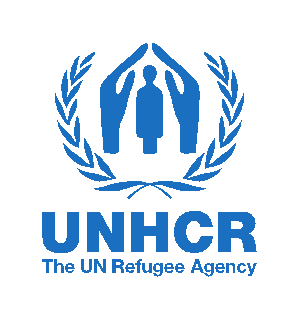United Nations Office of the High Commissioner for Refugees
Case Postale 2500. CH-1211 Genève 2 Dépôt. Suisse.
Background
The High Commissioner for Refugees is mandated by the United Nations to lead and coordinate international action worldwide for the protection of refugees and the resolution of refugee problems. UNHCR’s primary purpose is to safeguard the rights and wellbeing of refugees. In its efforts to achieve this objective, UNHCR strives to ensure that everyone can exercise the right to seek asylum and find safe refuge in another State, and to return home voluntarily. By assisting refugees to return to their own country or to settle permanently in another country, UNHCR also seeks lasting solutions to their plight. UNHCR’s Executive Committee and the UN General Assembly have also authorized UNHCR’s engagement with internally displaced people and people who are stateless or whose nationality is disputed.
UNHCR defines protection as “all activities aimed at achieving full respect for the rights of the individual in accordance with the letter and spirit of international law, including international human rights, refugee, statelessness and humanitarian law. Protection involves creating an environment conducive to respect for human beings, preventing and/or alleviating the immediate effects of a specific pattern of abuse, and restoring dignified conditions of life through reparation, restitution and rehabilitation.’
Policy framework
In October 2020, UNHCR released a Policy on the Prevention, Risk Mitigation and Response to Gender-based Violence, reiterating the agency’s work on GBV as a protection priority and institutionalised nine core actions to advance programming and coordination across the organisation. The Policy reiterates that BGV programming is lifesaving and an institutional priority for UNHCR.
The coverage of the Policy includes all UNHCR operations and persons of concern, and it is applied in all stages of the programme cycle, throughout the displacement continuum, in emergencies and protracted displacement settings, as well as in mixed flows and onward movements, and situations of statelessness.
In March 2018, UNHCR launched an updated Policy on Age, Gender and Diversity (ADG). Building on long-standing commitments and lessons learned, the policy aims to further enable displaced and stateless women, men, girls and boys to enjoy their rights on an equal footing, and to ensure that they are better able to participate fully in the decisions that affect their lives and the lives of their family members and communities. It includes five core actions on advancing gender equality and the empowerment of women and girls.
Areas of Focus
Creating safe environments and preventing, mitigating the risk, and responding to GBV is a high priority for UNHCR. Therefore, UNHCR continues to establish safeguards against such violence for all people of concern and works to ensure that response interventions are accessible for all survivors for GBV.
The implementation of UNHCR’s Policy on the Prevention, Risk Mitigation and Response to Gender-based Violence, has institutionalised UNHCR’s work on GBV through two objectives: a) risk of GBV is reduced for all PoC and b) all survivors have adequate and timely access to quality services and nine core actions to enable the three programme areas of prevention, risk mitigation and response as well as assessment, monitoring and reporting, planning, prioritisation, and resource allocation. The Policy also highlights the implementation of core global standards and guidelines including the GBV Minimum Standards.
Resources
Working with men and boy survivors of sexual and gender-based violence in forced displacement, UNHCR (2012). Available at: http://www.refworld.org/docid/5006aa262.html
Action against Sexual and Gender-Based Violence: An Updated Strategy, UNHCR (2011). Available at: http://www.refworld.org/docid/4e01ffeb2.html
Working with Lesbian, Gay, Bisexual, Transgender & Intersex Persons in Forced Displacement, UNHCR (2011). Available rel="noopener noreferrer" at: http://www.refworld.org/docid/4e6073972.html
UNHCR Handbook for the Protection of Women and Girls, UNHCR (2008). Available at: http://www.unhcr.org/protection/women/47cfae612/unhcr-handbook-protection-women-girls.html
Sexual and Gender-Based Violence against Refugees, Returnees and Internally Displaced Persons: Guidelines rel="noopener noreferrer" for Prevention and Response, UNHCR (2003). Available at: http://www.unhcr.org/3f696bcc4.html
Guidelines for Integrating Gender-Based Violence Interventions in rel="noopener noreferrer" Humanitarian Action, IASC (2015). Available at: http://gbvguidelines.org/wp-content/uploads/2015/09/2015-IASC-Gender-based-Violence-Guidelines_lo-res.pdf
UNHCR’s Engagement on Security Council Resolutions 1612 and 1960 (Monitoring and Reporting Mechanism MRM and MARA Available at: http://www.refworld.org/pdfid/5a6edf734.pdf
In Kenya, among Somali refugees over 500 survivors received some form of legal assistance and 62 percent of reported cases were prosecuted. Among the activities, the deployment of 10 translators to police gender desks located at various police stations in the camp strengthened confidential reporting and enhanced the investigation of reported cases. Additionally, close to 40 percent of police stations in the Dadaab operation have uninterrupted access to the Internet, which facilitates the police’s participation in an online training platform covering SGBV.
The UNHCR Sexual and Gender Based Violence Guidelines developed in 2003 are currently in revision to bring them in line with relevant internal and external guidance and policy documents such as the UNHCR Need to Know Guidance on Working with Men and Boy Survivors of SGBV, the Policy on the Protection of Personal Data of Persons of Concern to UNHCR, and the IASC GBV Guidelines. The revised guidelines will be rolled-out in 2017.
UNHCR was actively engaged in the revision of the IASC Guidelines for integrating Gender Based Violence interventions in humanitarian settings published in 2015 and supports the roll-out of the guidelines in the field. In 2016, 11 pilot countries receive training and technical support.
In Egypt, the provision of support to SGBV survivors among Syrian refugees includes a shelter and the use of creative approaches to psychosocial support. Female survivors have access to women’s centers where awareness raising, counselling and psychosocial support is made available. Special projects and approaches were put in place, such as the individual and group art therapy focusing on issues such as child marriage, training of trainers (ToTs) on art therapy.
UNHCR is a founding member of the Gender-Based Violence Information Management System and sits on its Steering Committee along with UNFPA, IRC, IMC and UNICEF. UNHCR is working to strengthen and harmonize data collection on SGBV by implementing the GBVIMS in selected operations. In 2015, UNHCR provided technical support in data collection and analysis to 22 countries.
